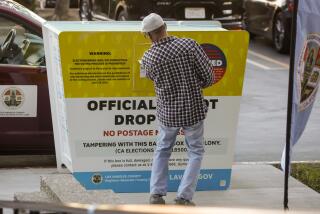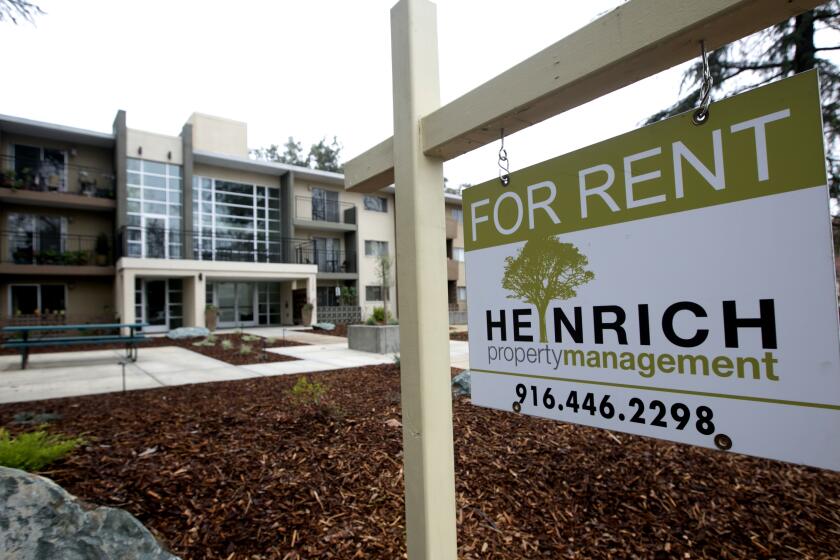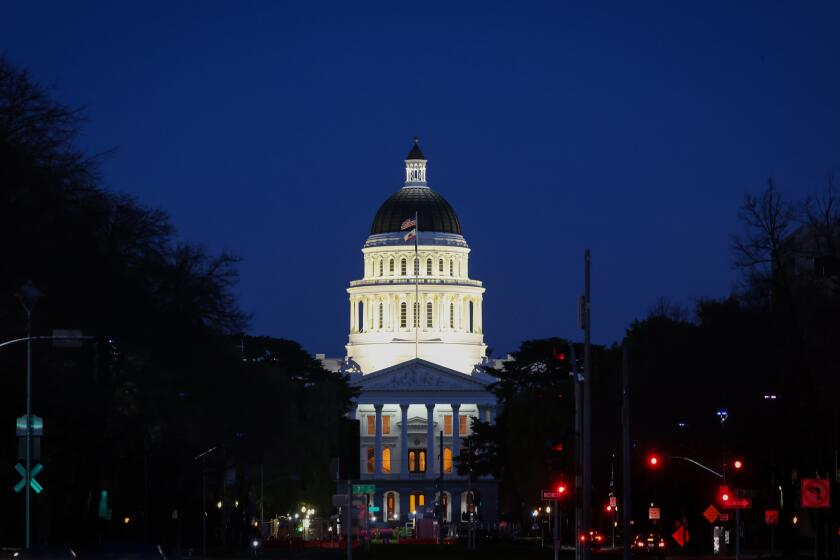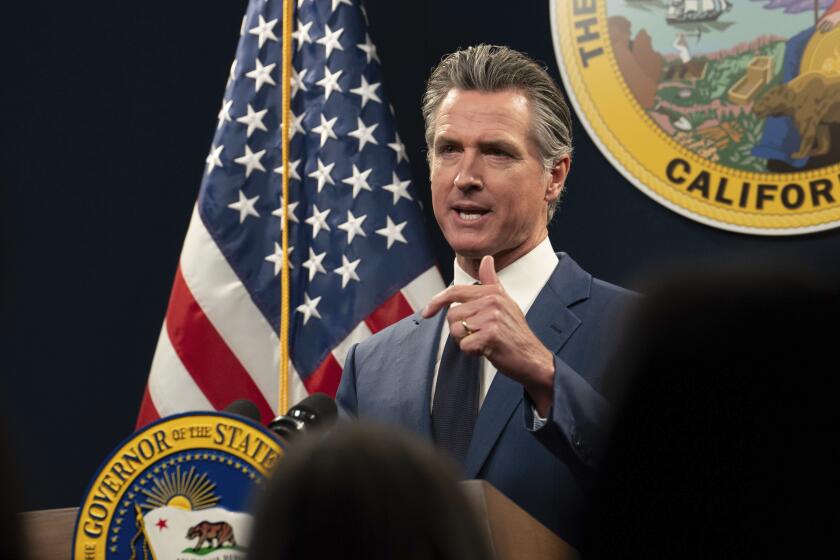Column: Another ‘new normal’ in California after coronavirus? All vote-by-mail elections
California is headed toward its first all-mail statewide election in November to protect voters and precinct workers from the pugnacious coronavirus. Get used to it.
All-mail elections — with every registered voter mailed a ballot — are very likely to become the “new normal” for California even after the virus is subdued.
It’s ironic: Old-fashioned “snail mail” is being chosen as the easiest, safest, most efficient and fraud-free way of conducting elections in this era of rapid technological evolution. Silicon Valley techies will be posting their ballots into snailboxes.
No one apparently has figured out how to make online voting secure from hackers. With mailed ballots, there’s a conspicuous paper trail.
“[President] Trump keeps feeding lies about voter fraud in vote-by-mail and he has zero evidence,” says California Secretary of State Alex Padilla, a Democrat.
After Trump got fewer popular votes than Hillary Clinton in 2016, but won the presidency in the Electoral College, he claimed that millions of people voted illegally. He created a commission to prove his fantasy. But he had to shut it down when no evidence was found.
Lately, Trump has been urging Republicans to fight a nationwide drive toward voting by mail that is motivated by the virus pandemic.
“There’s a lot of dishonesty going on with mail-in voting,” the president claims. “Mail ballots are a very dangerous thing for the country.”
And here’s the real reason Trump thinks they’re dangerous: “You’d never have a Republican elected in this country again,” he says.
Which of course is ludicrous. Some Republican governors and secretaries of state are even urging mail voting in the November presidential election. Maryland’s Republican Gov. Larry Hogan has ordered the state’s June 2 primary to be conducted by mail.
“It’s the safest way to vote from a health perspective,” Padilla says. “And it’s the easiest. A ballot comes to your home and you return it. You don’t even need a stamp anymore. It’s prepaid. We’re covering postage.”
Gov. Gavin Newsom hasn’t announced that California will hold an all-mail election in November, but insiders expect him to soon. Padilla is pushing for it.
There’d still be a few local voting centers where people could register on election day or replace a spoiled ballot. The centers would also be open for early voting a few days before the election.
Newsom ordered two special elections on May 12 to be be all-mail events. One is for a congressional seat in northern Los Angeles County and the other for a Riverside County state Senate seat.
“Actually, it makes sense for the whole state to do that,” Padilla says.
“There will be an election in November. The question is how do we vote so that it’s accessible, secure and safe for everybody. I believe the best way to do it is to send every voter a ballot in the mail.… We have to start planning now for the worst-case scenario.”
The worst case would be if the virus went on another rampage before the election and governments herded most voters back into their homes. Polling places would be virtually inoperable.
California has been gradually moving toward all-mail voting anyway. It’s a lot more convenient — although not as heartwarming an exercise in American democracy as a poll visit on election day.
In the 1962 gubernatorial election, only 2.6% of voters cast absentee ballots. In those days, a voter had to have an excuse. “Going to be out of town” was the common claim.
In 2002, Democratic Gov. Gray Davis signed a “no excuse” bill that allowed everyone to vote by mail. That fall, 27% of the gubernatorial election ballots were cast by mail. By 2018, mail ballots totaled 65% of those cast.
There’s perpetual speculation about which party or ideology benefits most from mailed ballots. The prevailing theory is that since mailed voting increases turnout — and there’s no question about that — it helps Democrats and liberal causes.
That’s because Republicans tend to be “high propensity” voters who never miss an election. But many Democrats seem to cast ballots only when the spirit moves them. There’s some truth in that, but it’s mostly urban legend.
“California’s experience has been that improved turnout doesn’t inherently advantage one party over the other,” says Paul Mitchell, vice president of Political Data Inc., which generates voter statistics. “It benefits both sides.”
Mitchell dug into the 2018 general election and found that both parties had the same percentage of increased turnout among mail voters. All groups — by race and by age — had higher turnouts when they voted by mail than if they went to a polling place.
Overall, among those who received mail ballots, 71% wound up casting them. But only 53% of non-mail voters went to the polls. The turnout of registered Republicans was three percentage points higher than that of Democrats — regardless of how they voted — but the GOP is an endangered species in California.
Because of the virus scare, Bob Shrum, a longtime Democratic strategist who is director of the Center for the Political Future at USC, believes that mail voting “will sustain or increase voter turnout of people who otherwise might be afraid to go to the polls. Marginally, it will help Democrats in congressional races.”
Padilla won’t venture into political speculation. He focuses on the virus.
“Risking your health and your life should not be required to participate in democracy,” he says.
You’d think there’d be nonpartisan, unanimous agreement on that logic.
More to Read
Start your day right
Sign up for Essential California for news, features and recommendations from the L.A. Times and beyond in your inbox six days a week.
You may occasionally receive promotional content from the Los Angeles Times.







